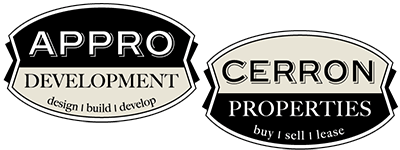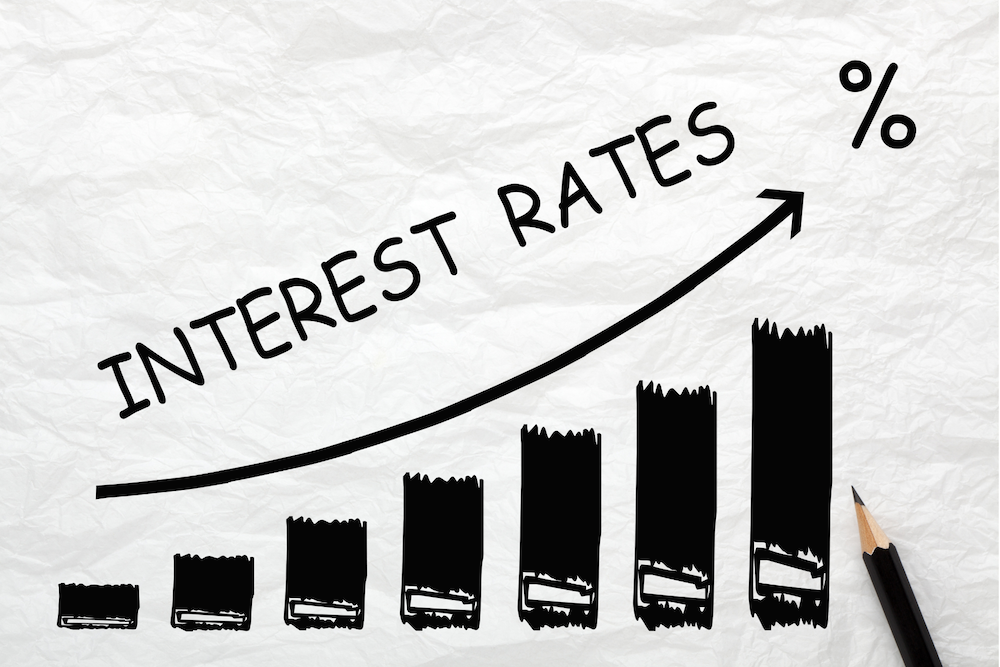The truth about interest rates and financing. The headlines surrounding interest rates and financing can be scary…but, thankfully, the truth is much less so. Yes, interest rates are higher than they have been over the past few years. But, historically speaking, they’re still relatively low. And, the reality is, if you’re looking for a commercial or industrial property for …
Property Improvements: Are You Missing an Opportunity for Potential Tax Savings?
Property Improvements: Are You Missing an Opportunity for Potential Tax Savings?
By Jack Matasosky
 If property improvements are on your mind, you might want to check out this recent article by Mark Colvin. According to his recent article, “Don’t Miss the Potential Tax Savings on Property Improvements,” “businesses that have made recent improvements to their property may be eligible for tax savings.” A recent IRS ruling is the source of this article commentary clarifying when an expenditure qualifies as a deductible repair and when it should be treated as a capital expenditure. […Continue Reading the Full Article]
If property improvements are on your mind, you might want to check out this recent article by Mark Colvin. According to his recent article, “Don’t Miss the Potential Tax Savings on Property Improvements,” “businesses that have made recent improvements to their property may be eligible for tax savings.” A recent IRS ruling is the source of this article commentary clarifying when an expenditure qualifies as a deductible repair and when it should be treated as a capital expenditure. […Continue Reading the Full Article]
As with all tax related topics, please consult with a tax and/or accounting professional for advice on your unique business.
If you are considering property improvements for your business, please feel free to with any questions you may have.
{{cta(‘a783137d-3d9e-4401-98fb-1695e85a9889’)}}
Construction Lending – Good News!
Construction Lending is Booming and that is Good News for us all!
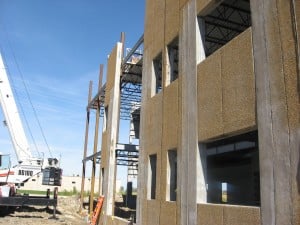 “Construction Lending Booming Again” was an article recently published on GlobeStreet.com by Jennifer LeClaire.
“Construction Lending Booming Again” was an article recently published on GlobeStreet.com by Jennifer LeClaire.
In this article, Greg Winchester explains more on just what is driving this trend…
“Gauging by Trimont Real Estate’s pipeline, the return is real. Trimont is reporting a 12.9% increase over the past 18 months. The company says these numbers reflect an hike in construction activity nationwide,” according to Greg Winchester.
The team at APPRO Development has seen a definite increase in building projects this year with many utilizing financing options that were not available in the past.
According to multiple sources, including the Trimont loan administration monitor, McGraw Hill Construction data, and the Fed’s Beige book, among others, all indicate the same thing – there is an uptick in construction lending and that is good for us all!
You may read the full article here: Construction Lending Booming Again.
Need to discuss options for financing your next construction project?
Our team of experts is here to help guide you through the process. We have worked with a variety of lenders over the years, forging strong relationships and would be happy to recommend a reputable lender for your next construction project. Feel free to call us at 952-469-2171.
{{cta(‘edaec547-e418-4730-960a-c7c47c8cfbdf’)}}
Real Estate Leads Economic Improvement through 2015
Real Estate Leads Economic Improvement through 2015 according to NAR
By Jack Matasosky
 A recent news release by the National Association of REALTORS (NAR), summarizes findings by NAR chief economist, Lawrence Yun, indicating economic improvement through 2015.
A recent news release by the National Association of REALTORS (NAR), summarizes findings by NAR chief economist, Lawrence Yun, indicating economic improvement through 2015.
You may read the full article, “Forecast for Housing and the Economy Suggests Gradual Improvement through 2015”, HERE.
As the residential real estate market tends to lead the industrial/commercial real estate market, this is good news to our ears here at APPRO and CERRON!
Are you considering making a space change for your business? By contacting our team early on in the process, you will find a knowledgeable partner to expertly walk you through all possible options and scenarios, resulting in the best possible solution for your business. To get started, call our team today!
MN Warehousing Tax – Part 1
MN Warehousing Tax – Part 1
MN Warehousing Tax– Part 1 is the first of two reports we are planning to bring to our readers regarding the new warehouse tax on the books for MN businesses. If you are involved in third party warehousing as a part of your business, we are sure you have heard the MN Warehousing Tax is due to go into effect on April 1st. It is actually one of three business to business (B2B) taxes to go into effect in 2014. This specific warehousing tax would impact businesses which provide third party warehousing services, as well as those businesses who utilize these third party services.
According to the MN Department of Revenue, “Starting April 1, 2014, business-related warehousing and storage services will be taxable in Minnesota. This means state sales and use tax is due when a business buys warehouse or storage services for its tangible personal property.” There are exceptions to this rule, which are dependent upon business use[1].
Come April 1st, Minnesota would be one of few if not the only state with a warehousing tax of this kind, which could ultimately put the businesses in our state at a distinct disadvantage. Some companies are already feeling the impact of this tax. According to an article by Jessica Harper for Sun Thisweek Dakota County Tribune, in an interview with warehousing General Manager, Kathy Forester, in talking about the tax, she states, “With its customers seeking services elsewhere, Strategic lost 18 percent of its revenue between August 2013 and January 2014, which prompted the company to lay off 22 percent of its workforce[2].”
The Minnesota Legislature is scheduled to reconvene on February 25th. At that time, the Minnesota State Budget will be reviewed. If there is a sufficient surplus, Governor Dayton may consider a repeal of one or more of these B2B taxes[3]. As it stands now, however, these taxes have been signed into law and only a new bill that strikes the provision of the current tax could repeal it. There are many groups working right now, toward the effort to repeal the MN Warehousing Tax.[4]
Stay tuned to learn more in the weeks to come, or feel free to contact our team with concerns about the impact on your current commercial space.
Upcoming Dates:
- Mid-February – State Budget Forecast (Gov. Dayton will use this information to determine if these new taxes are necessary)
- February 25th – New Legislative Session Begins
- April 1st – New Warehouse Tax goes into effect
[1] MN Department of Revenue Warehouse Tax Summary
http://www.revenue.state.mn.us/businesses/sut/Pages/2013_WarehouseStorageServices.aspx
[2] Businesses impacted by the MN Warehouse Tax
http://hometownsource.com/2014/01/27/businesses-legislators-feel-heat-from-new-taxes/
[3] Businesses vow to repeal the warehouse tax and Gov. Dayton to support repeal if sufficient surplus exists
http://www.mprnews.org/story/2014/01/08/businesses-vow-to-seek-repeal-of-warehouse-tax
[4] Commercial Real Estate Group works to repeal the tax
http://www.startribune.com/business/242830181.html
What to Look for in Investment Properties
Want to know what to look for in investment properties? This is a great place to start.
 Love Real Estate? Thinking about getting into Investment Properties?
Love Real Estate? Thinking about getting into Investment Properties?
Most people know the common formula affectionately known as IRV.
Income = Rate X Value
Income is the net operating income (revenues minus operating expenses and before debt service).
Value is the real estate market value.
Rate is the capitalization rate. When you have a higher cap rate, the lower the value for the same amount of income or conversely, the lower the cap rate, the higher the value. Cap rate also reflects risk. Typically the higher the cap rate, the higher the risk. Lower cap rates come from credit tenants who are perceived as less risky. Cap rates run around 4% to 12% with an average of 8%. For easy figuring many use 10%–$100,000 of income is a $1 million value.
The other part of the equation is not reflected here: what does is cost to borrow. If interest rates remain low (as they are predicted to do), then the cost of borrowing will stay low and allow for greater property values that still provide a desirable rate of return. Some investors have recently enjoyed 5 year money for as little as 3% interest. When you can leverage your money, you can make more money, but it is also more risky. I suggest you talk to your banker before looking to buy to find out how much you could borrow and at what terms that work for you. If you don’t have a banker, we can provide several professional contacts we have enjoyed working with over the years.
Other things to look for:
- quality of the tenants
- length of the term of the leases in place and renewal terms
- vacancy (and vacancy allowance)
- quality of the building, grounds and parking lot
- condition of HVAC
- condition of the roof
- responsibilities of landlord/tenant in the lease
- property management
- operating expenses—are they in line?
- real estate taxes –property tax detail
- location –ease of access, lit intersection
- potential changes in roadways or development-contact the city
- zoning code and allowable uses
- potential reuse
- parking stalls—parking ratio
- visibility
- signage
The good news is that anyone can be a real estate investor. The key is to have good people to help you with your property: banker, property manager, commercial real estate agent, contractor, accountant and real estate attorney. The APPRO/CERRON team can help with leases, sales, acquisitions, management, market/proforma analysis, architectural design, and construction. We have contacts to cover the other areas to fit your project. Take their professional advice, use common sense and follow the golden rule of real estate: don’t fall in love with it. When it is time to sell, sell.
<em>The information contained on this website and from any communication related to this website is for information purposes only. As with all financial matters, consult your tax, legal or accounting professionals to discuss how investment decisions may impact your specific circumstances.</em>
Trading Up: The Basics of a 1031 Tax Exchange
Trading Up: The Basics of a 1031 Tax Exchange
A Commercial Real Estate Topic Review of the purpose, rules & options in a 1031 Tax Deferred Exchange
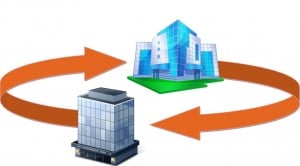 I’ll start by saying you should consult with your tax and financial advisors for information on whether a 1031 Exchange is right for you and your financial goals. I can help you find the new property and also help you sell the old property.
I’ll start by saying you should consult with your tax and financial advisors for information on whether a 1031 Exchange is right for you and your financial goals. I can help you find the new property and also help you sell the old property.
A 1031 Exchange can be a great tax benefit for someone that wants to stay invested in commercial real estate and would also like to trade up and improve their commercial investment. Maybe that office warehouse with the low ceilings and dated office finish has become increasingly expensive to keep up and to lease out. Maybe a newer, high clearance warehouse with a beautiful office space and state of the art cabling and communication capabilities is just what your renters are looking for. You’ve just hit on the perfect 1031 exchange scenario. Sell that old building and buy one that fits your goals without having to give Uncle Sam any of your hard earned commercial investment profit.
There are a few things you need to know about 1031 exchanges before you take my advice and call Cerron for your property solutions. So what is a 1031 Tax Exchange? In this article I’m talking about a 1031 (also called “like-kind exchange”) being used to swap one commercial property investment asset for another and not losing 15 to 20 percent to the government in tax liability. In other words, you can change the form of your investment (trade up) without cashing out and being liable for capital gains tax, the tax is deferred.
Sorry, you can’t use a 1031 exchange for personal use. If your spouse would like a bigger, nicer, more expensive house, that’s a personal problem and a 1031 isn’t going to work to solve it. It’s for commercial investment property. There are other rules that apply also. You need to identify your property that you’re selling for a 1031 exchange before you close on it. Then you must submit the replacement property to a qualified intermediary in writing within 45 days. The qualified intermediary will hold the money from the property you sold until you purchase the new property and will facilitate the transaction. You must also close on the new like-kind property within 6 months of the sale of the original property. The IRS gives like-kind property a surprisingly liberal meaning so it may be possible to sell a farm and buy a shopping center. To get the full benefit the new property should be of equal or greater value.
There’s a quick lesson in 1031 Exchanges. Any one of us at CERRON Properties would be glad to help you get more information and help you find the perfect property for your 1031 Exchange.
Thanks,
Dan Huntington
Commercial Property Improvements Equal Tax Benefits in 2013
Are You Missing an Opportunity to Capture 2013 Tax Benefits?
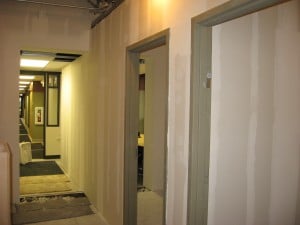 If commercial property improvements are on your horizon, there is still time to improve your commercial property before the end of the year. Did you know there are tax benefits available if you own and lease out commercial real estate? But, you will need to act fast – you have until December 31, 2013 to take advantage of these tax benefits.
If commercial property improvements are on your horizon, there is still time to improve your commercial property before the end of the year. Did you know there are tax benefits available if you own and lease out commercial real estate? But, you will need to act fast – you have until December 31, 2013 to take advantage of these tax benefits.
According to Stephen Fishman in a recent blog article in Inman News, “Improve Commercial Property Now to Capture 2013 Tax Benefits”, “Qualified leasehold property improvements made during 2013 can qualify for the following tax benefits:
- 15-year depreciation period (instead of 39 years).
- Section 179 deduction up to $250,000.
- 50 percent bonus depreciation.
Any one of these benefits would be great, but all three together enable commercial landlords (and lessees) to deduct a huge percentage of the cost of making improvements in a single year, rather than having to depreciate the entire cost over 39 years.”
APPRO Development, Inc., your midwest design-build, general contractor, has been helping business owners like you to find unique property solutions for more than 25 years. We have a few openings left in our fall schedule – Contact Us today to schedule your commercial property improvement.
MN BACK TO SCHOOL MARKET UPDATE
MN BACK TO SCHOOL MARKET UPDATE
 The kids are off to school. It’s time to close up the cabin and focus on getting something done before year end. Fall is always a busy time in the Minnesota commercial real estate market, as we are seeing here at CERRON Commercial Properties.
The kids are off to school. It’s time to close up the cabin and focus on getting something done before year end. Fall is always a busy time in the Minnesota commercial real estate market, as we are seeing here at CERRON Commercial Properties.
Third quarter we had a noticeable change in office condominium sales. Businesses shifted to longer term leases and larger spaces. We actually had buyer wars—something we haven’t seen much of since 2007. Land sales even saw an uptick. The national retailers are back. Dealmakers were abuzz at the International Council of Shopping Centers (ICSC) convention this spring. This is all good news to a heavily beat up industry over the past six years.
We have been waiting for the inventory of distressed product to be absorbed and while there are a few deals left out there, they are dwindling. The market is heading in the other direction so if you are considering a move, now is the time.
We can help you with a market analysis. An initial one is no charge. In fact we only get paid if we produce a buyer or a tenant. Most owners pay our fee, so many times there is no charge for buyer/tenant representation services.
We now have all commercial properties for sale and lease on our website, and may be searched for free. Check it out at www.cerron.com or call me direct at 612-708-5281 email rozp@cerron.com.
MN Warehouses Are Under Attack
“MN Warehouses Are Under Attack”, according to Jonathan Lamb, president of Lake Superior Warehousing Company, Duluth, “describes the new 6.875% service tax on Minnesota warehouses that, barring repeal, will take effect April 1, 2014.”
This legislation has the potential to have a significant impact on many industrial businesses AND service providers. “Our members are deeply concerned about the potential impact of this new business sales tax on their tenants who provide third party warehousing services, businesses which operate with slim margins and compete across state lines with similar service providers in nearby states with lower overhead costs, such as Wisconsin,” she said. As a result, “The Minnesota Warehouse Association is taking no chances. According to Hausladen, his members are moving ahead, drafting legislation to repeal the tax, which it plans to introduce at a “launch event” July 30 at the Radisson Hotel Roseville.”
Learn more about this activity in this morning’s MN Real Estate Journal published article, “11th HOUR ANTI-COMPETITIVE WAREHOUSING TAX: A BIG LOSER FOR OWNERS OF INDUSTRIAL PROPERTIES…AND FOR MINNESOTA?”, by Stephanie Wolf, NAIOP Minnesota.
